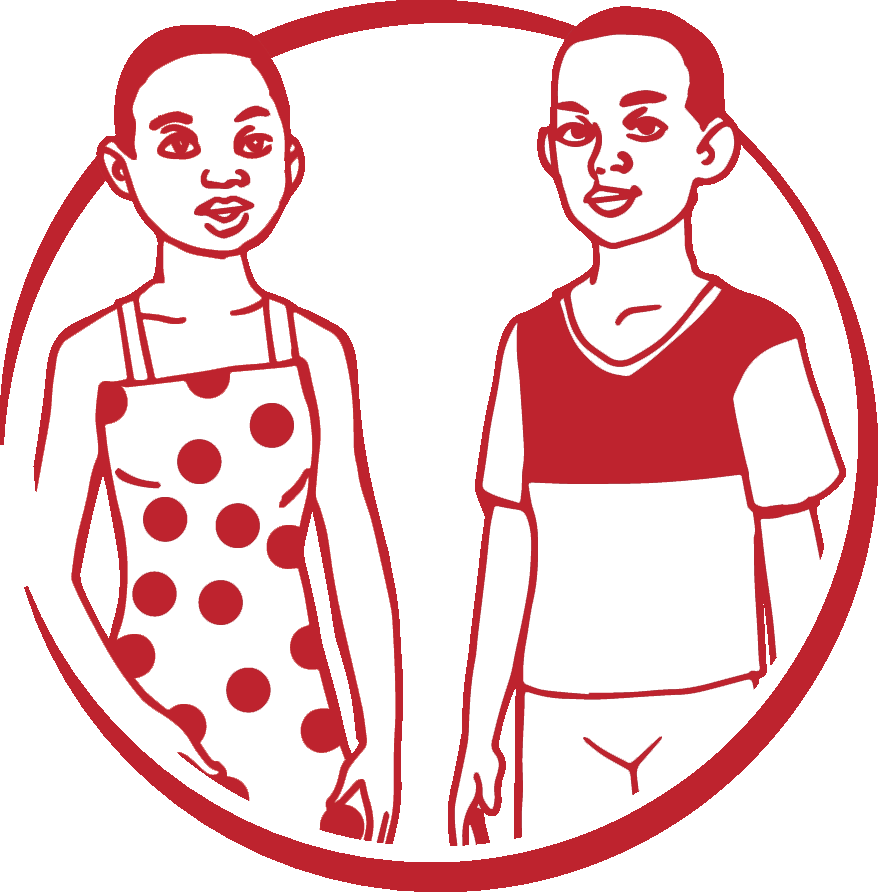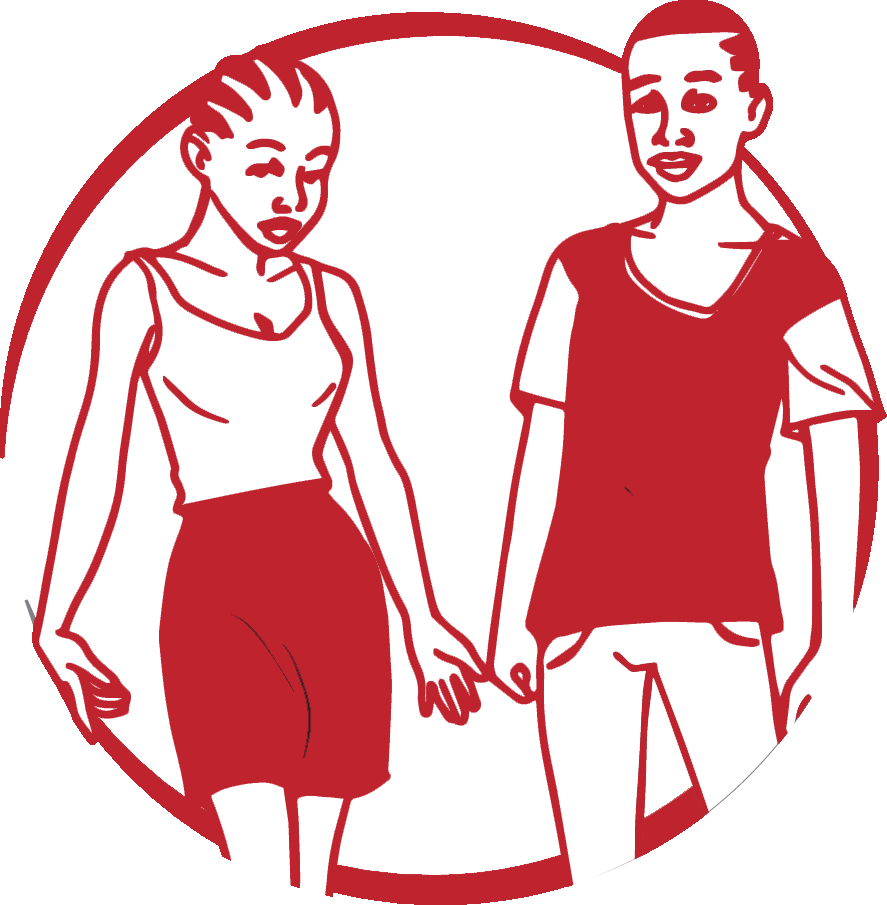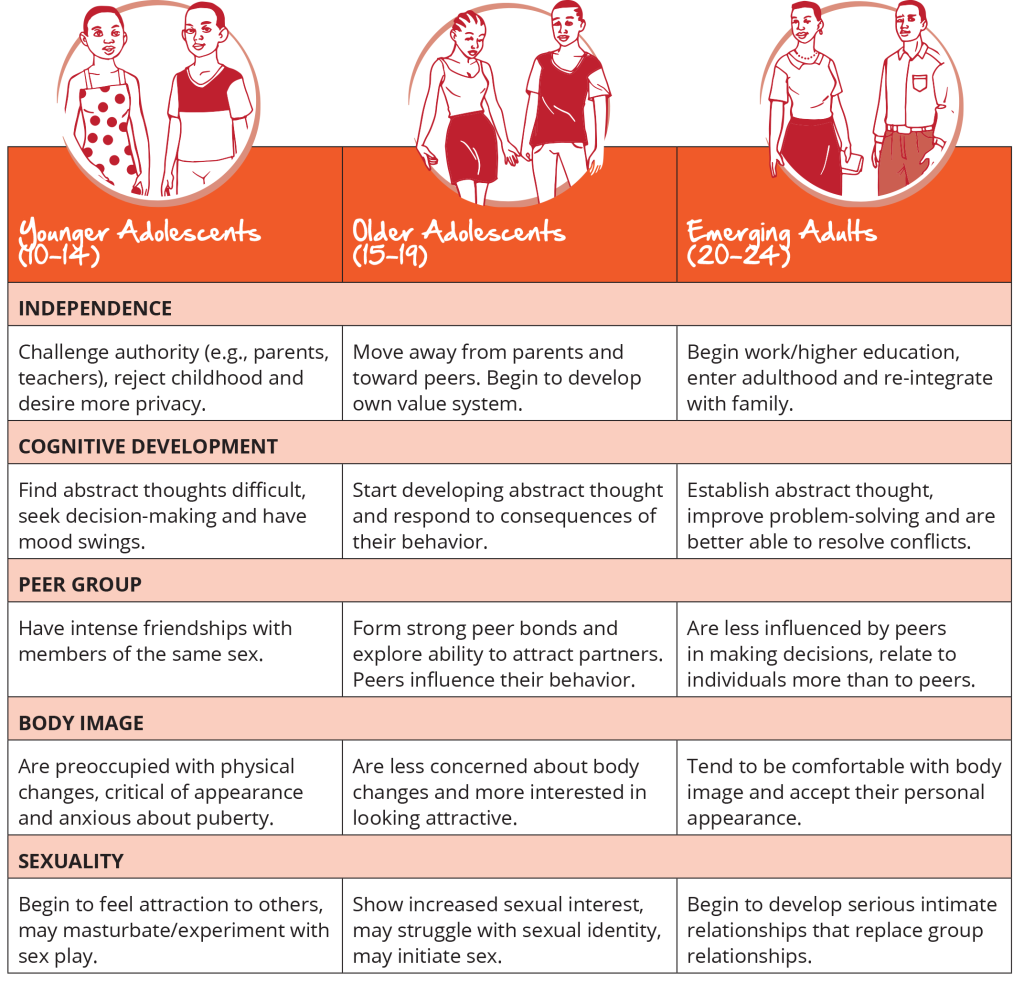Focus on Adolescent SRH
Who are Adolescents?
Adolescents are young people transitioning from childhood to adulthood. Adolescence is commonly defined by age (10 to 19 years old), and as a life stage characterized by important developmental changes. These include changes in the way people look, think, feel and socialize. Throughout adolescence and young adulthood, individuals go through different stages of development. While there is no set age for when these changes occur, it can be helpful to break down the age group into two smaller groupings:
Younger Adolescents
10 to 14 years oldOlder Adolescents
15 to 19 years oldThe transition from childhood to adulthood is a time of uncertainty, identity formation, risk-taking and experimentation. It is a phase of life marked by curiosity, sexual growth, increased influence by peers and transition from dependence on others to experiments with independence and decision-making.
Reminder!
Think back to when you were an adolescent. Does any of this sound familiar?
The focus of the I-Kit is on those aged 10 to 19, whom we will call “adolescents” or “young people.” However, what you learn from the I-Kit can be adapted for emerging adults, such as those aged 20 to 24, as well as others outside this age range.
The following chart provides useful information about how adolescents develop socially, cognitively, physically and sexually. Of course, no two young people are the same and every individual develops at different rates. Use this chart as an illustration of the development process.
Adolescent Psychological Development Chart
Age and stage of development are not the only things that characterize adolescence; there are other aspects of their lives that influence who they are and what they do. These can include:
- Family life status – an orphan may have a very different upbringing than a young person raised in a two-parent home.
- Marital status – a married 18-year-old girl may have very different SRH needs than an unmarried 18-year-old girl.
- Friends and social networks – research suggests that youth with stronger social networks and peer bonds develop on a more healthy trajectory, and are more mentally and socially resilient, than youth without social support.
- Religion/religious beliefs – a young person growing up in a religious Christian household may be told different things and have different beliefs about sex and sexuality than a young person raised in a secular Muslim home.
- Education level – youth who are in secondary school may have very different ambitions and opportunities than youth who never completed primary school.
- Socio-economic status – poor young people often face different challenges and opportunities than young people from wealthy backgrounds.
Why Focus on Adolescents?
Choices made during adolescence can develop into repeated habits that continue into adulthood, including both healthy and unhealthy behaviors.Globally, nearly two-thirds of premature deaths are associated with behaviors and conditions that began in adolescence. For example, risky sexual behavior, tobacco use, poor eating and exercise habits can lead to illness or premature death later in life.
“Young people are today’s and tomorrow’s wage earners and entrepreneurs, educators and innovators, health professionals, political and civic leaders, vital to economic growth and wellbeing.” – USAID's Youth in Development Policy Of particular concern is the high prevalence of sexually transmitted infections (STIs) affecting young people, including human immunodeficiency virus (HIV). In 2007, 45 percent of all new HIV infections worldwide happened in youth aged 15 to 24 years old, while a third of all new STIs each year occur in people below the age of 25. Moreover, pregnancies and childbearing during the teenage years are associated with significant health risks for adolescent women, especially in low- and middle-income countries where related complications are the leading cause of death among girls aged 15 to 19.In Sub-Saharan Africa (SSA), AIDS is the leading cause of death among 15 to 19 year olds, and the HIV prevalence among this age group is higher in SSA than in other parts of the world. Further, women who become pregnant in SSA face a risk of death 600 times higher than women in industrialized countries. For adolescents, the risk is even higher as they are more likely to be affected by preeclampsia, obstructed labor, abortion complications and iron deficiency anemia than older women.
In view of these greater risks among the younger population, it is essential to ensure that adolescents are given the tools to make healthy choices so they can lead healthy and successful lives in the future.
What is Unique about Urban Adolescents?
Another strong influence on a young person’s development is where they live. The urban environment can have both advantages and disadvantages for adolescent SRH.Advantages
Urban areas have more infrastructure and services, such as health clinics, than rural areas. Adolescents are more likely to be enrolled in school and have more knowledge of SRH matters. They also have more exposure to media outlets, like radio and television, which can communicate important SRH information.
Disadvantages
While urban adolescents have more exposure to a variety of media, some media sources may provide unreliable information that can expose youth to greater risk. Urban areas have a higher concentration of meeting venues, such as bars and discos, giving adolescents more sexual freedom and more opportunities to take risks. Traditional family structures—for example, a child living with one or both parents—may be less common for urban adolescents, particularly those who travel to the cities from rural areas. Poor urban adolescents are especially vulnerable as they may have less access to the services offered by cities and may live in poor, inadequate housing with limited resources or support.
What is Sexual and Reproductive Health?
Health itself is a state of physical, mental and social well-being. SRH applies specifically to sexuality and the reproductive processes, functions and systems at all stages of life. This definition requires a positive and respectful approach to sexuality and sexual relationships, as well as the possibility to have pleasurable and safe sexual experiences, free of coercion, discrimination and violence.SRH is heavily influenced by gender norms and roles, as well as by social expectations and power dynamics, and must be understood within specific social, cultural, economic and political contexts. SRH also looks at the individual holistically, addressing the social, emotional, cognitive and physical aspects of a person’s life.







